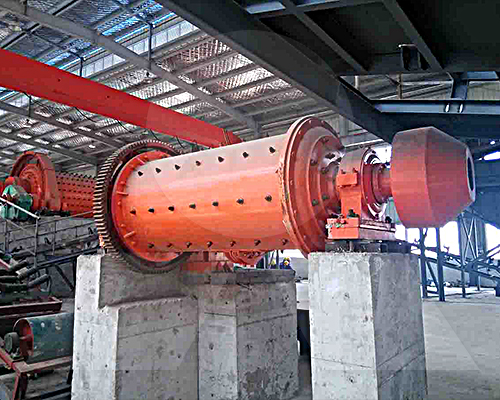The Role and Applications of Ball Mills in Various Industries
Ball mills are essential equipment used across multiple industries, particularly in mining, cement production, and material processing. They play a crucial role in grinding and blending materials into fine powders, enabling the efficient processing of various substances for different applications.
Primary Functions of a Ball Mill
The main function of a ball mill is to grind materials into a fine powder. It accomplishes this by rotating a cylinder filled with grinding media, such as steel or ceramic balls, that crush and grind the material as the cylinder rotates. This grinding process is widely used to reduce the size of raw materials, prepare mixtures, and achieve the desired particle size for different applications.
In the mining industry, ball mills are commonly used to grind ore, turning extracted rock into fine particles that can then be further processed to extract valuable minerals. In cement production, they help to grind clinker and other components, producing the fine powder necessary for making cement. Their ability to grind materials to various levels of fineness makes them versatile tools for processing different kinds of raw materials.
Versatility in Different Industries
Ball mills are not only used in mining and cement manufacturing. They also have significant applications in chemical processing, where they are employed to mix and grind chemicals and raw materials for various products. In ceramics, ball mills help in the fine grinding of clay and other materials, ensuring a smooth texture for the final ceramic products.
In the food and pharmaceutical industries, ball mills are utilized to grind materials for producing powdered forms of food additives, spices, or active pharmaceutical ingredients. The ability to adjust the grinding time and speed allows for precise control over the final product’s particle size, ensuring consistency and quality.
Advantages of Using Ball Mills
One of the main advantages of using ball mills is their efficiency in grinding hard and abrasive materials. The robust design and rotating mechanism ensure that even the hardest substances can be ground down to a fine powder. Additionally, ball mills allow for continuous operation, which is crucial in large-scale industrial processes where constant production is required.
Another benefit is the flexibility in adjusting the grinding parameters, such as speed and grinding time, to achieve the desired fineness. This adaptability makes ball mills suitable for various applications across different industries, as they can be fine-tuned to meet specific requirements.
Challenges and Maintenance Considerations
While ball mills offer numerous benefits, they also present some challenges. The grinding process generates significant heat, which can affect the material properties if not properly controlled. Adequate cooling systems and temperature monitoring are essential to prevent overheating.
Maintenance is also a key factor to ensure optimal performance. Regular inspection and replacement of worn grinding media, as well as monitoring the condition of the mill’s components, are necessary to avoid unexpected downtime.
Conclusion
Ball mills play a vital role in grinding and processing materials across various industries, including mining, cement, ceramics, and chemical processing. Their ability to reduce particle size and achieve the desired fineness makes them indispensable in industrial applications. Despite some challenges, proper maintenance and monitoring can ensure the efficient and reliable operation of ball mills, maximizing their benefits and enhancing overall productivity.
- > A Deep Dive into the HST Hydraulic Cone Crusher
- > Challenges and Solutions of Using Impact Crushers for Crushing High-Moisture Clay in Indonesia
- > Application of Cone Crushers in Secondary Crushing for Mining
- > The Application of Vertical Roller Crushers in the Cement Industry
- > Single-Cylinder Cone Crusher in Iron Ore Processing
- > Wheeled Mobile Crushing Plant: Ideal Applications and Working Conditions
- > Application of Cone Crusher in Secondary and Tertiary Crushing in Metal Ore Beneficiation Process
- > Common Issues When Operating a Ball Mill in Stone Quarrying
Hot Product


Online




Message

